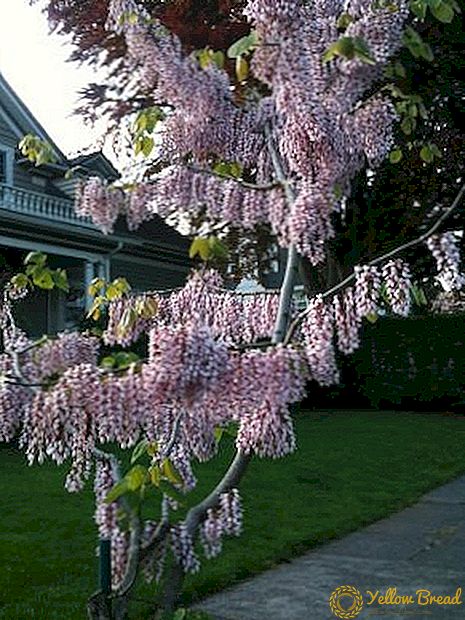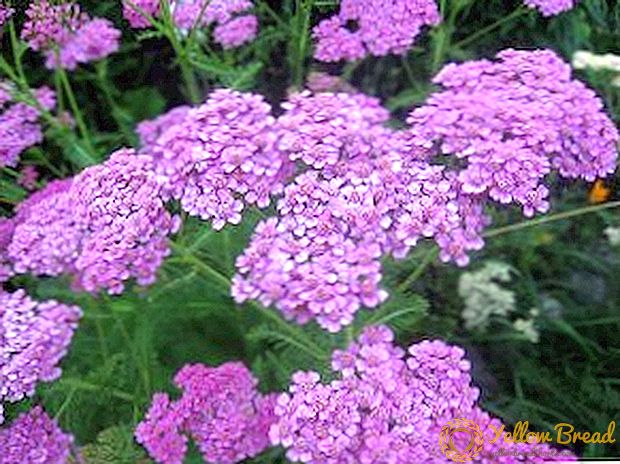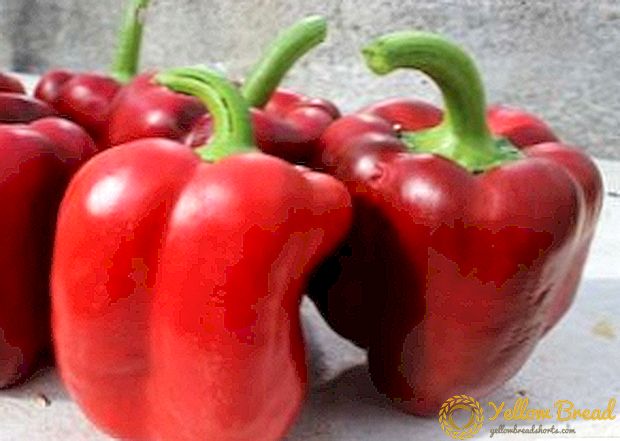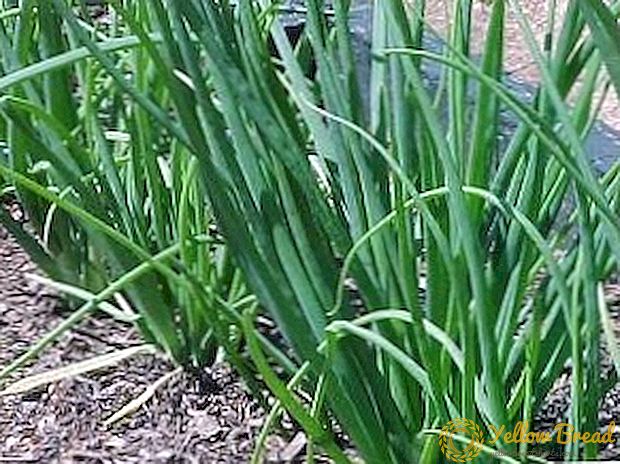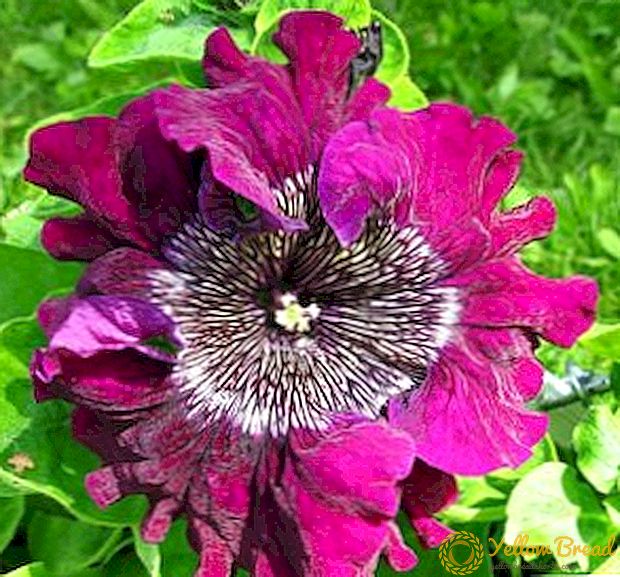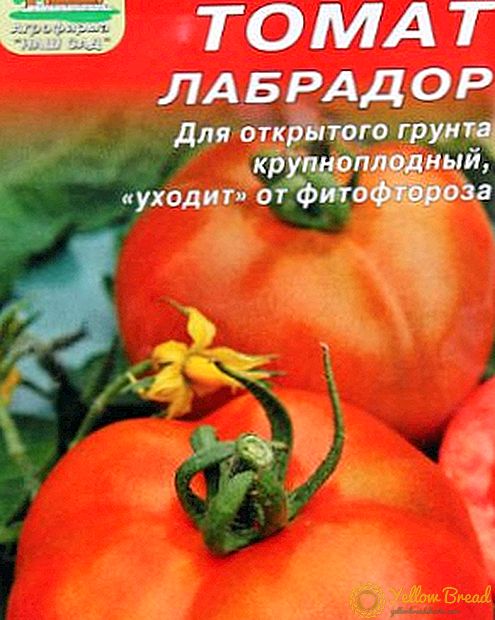 Of the many varieties of tomatoes, it is difficult to choose the right one without trying to grow it.
Of the many varieties of tomatoes, it is difficult to choose the right one without trying to grow it.
The variety "Labrador" is known to most only by description.
Among those who planted, there are no negative reviews about these tomatoes.
Consider the characteristics, highlight the advantages and disadvantages, especially the care and use of tomatoes "Labrador".
- Appearance and description of the variety
- Characteristics of the fruit
- The advantages and disadvantages of the variety
- Agrotechnology
- Seed preparation, planting seeds in boxes and care for them
- Seedlings and planting in the ground
- Care and watering
- Pests and diseases
- Conditions for maximum fruiting
- Use of fruits
Appearance and description of the variety
The variety of tomatoes "Labrador" is described as early ripe, determinant. The ripening period is from 78 to 105 days, depending on growing conditions, including weather. It is resistant to sudden changes in temperature and common diseases.  Standard bushes reach no more than 50-70 cm in height, have a strong stalk with an average amount of green or dark green foliage. Inflorescences form after the 7th leaf and further through each next leaf. Productivity makes up to 2 kg from one bush.
Standard bushes reach no more than 50-70 cm in height, have a strong stalk with an average amount of green or dark green foliage. Inflorescences form after the 7th leaf and further through each next leaf. Productivity makes up to 2 kg from one bush.
Characteristics of the fruit
The size of a ripe tomato is not very large and when ripe it reaches 80-120 g. The color of a ripe fruit is red, has the shape of an apple, not many chambers, a thin skin, a fleshy structure. Taste quality varieties "Labrador" classic sweet and sour.
The advantages and disadvantages of the variety
Among the advantages of tomato "Labrador" are the following characteristics:
- early harvest (ripen in late June);
- suitable for growing in greenhouses and in the open field;
- gives a good harvest, up to 2.5 kg from a bush;
- fruits on inflorescence ripen at the same time;
- resistant to many diseases, including late blight;
- you can not stepchild;
- excellent taste;
- unpretentious to weather conditions.

The disadvantages of this variety are:
- not too long shelf life;
- due to the thin hides may not be very suitable for canning in general.
Agrotechnology
For planting and cultivation of tomatoes "Labrador" apply agricultural equipment for early ripening varieties. Only some of the nuances that we will discuss below. Preparation begins in the fall: a site is selected where our bushes will be planted.
- manure not more than 5-10 kg per 1 square. m;
- organic and mineral fertilizers per 1 sq. m. m composed of: 10-15 g of urea, 40-50 g of superphosphate, 20 -25 g of potassium salt or potassium magnesia.

Seed preparation, planting seeds in boxes and care for them
For more northern regions, seeds of early ripe tomatoes are recommended to be planted in boxes for seedlings.
If the seeds are purchased in specialized stores, then there is no need to process them, but if collected from the last harvest, then it will not be superfluous to treat with antifungal agent and a weak solution of potassium permanganate.
After disinfection, the seeds must be washed.
 The mixture for seedlings is doused with boiling water, grooves are made at a distance of 3–4 cm and seeds are planted no more than 1 cm apart, to a depth of 1.5 cm. After planting, the boxes are covered with foil and left in a warm place for seed germination.
The mixture for seedlings is doused with boiling water, grooves are made at a distance of 3–4 cm and seeds are planted no more than 1 cm apart, to a depth of 1.5 cm. After planting, the boxes are covered with foil and left in a warm place for seed germination.When the first leaves appear, the film is removed, the boxes are moved to a cool, well-lit place. Grow seedlings up to 55-65 days. Watering is carried out regularly, about once a week.
Seedlings and planting in the ground
At the beginning of May, when the ground warms up to + 15 ... +18 ° С, transplanting is performed.
Seedlings are planted in open ground, observing the distance between rows up to 70 cm, and each row forms 30-35 cm. Shrubs must first be watered, freed from containers and landed in the ground before the first leaflets.  If the seedlings have outgrown, it is planted under an inclination so that the height above the ground is no more than 20-25 cm. After the planting, the tomatoes are watered and covered with earth.
If the seedlings have outgrown, it is planted under an inclination so that the height above the ground is no more than 20-25 cm. After the planting, the tomatoes are watered and covered with earth.
Care and watering
Since during the planting of seedlings in open ground there is still a risk of frost, it is necessary to provide ways to protect:
- shelter bushes cut plastic bottles or glass jars (for small areas);
- smoke for large fields;
- watering normalized.
 Loosening the soil with a lack of moisture is necessary, because tomatoes can feed moisture from the soil air. When organic fertilizers are too dry for drought, tomatoes can burn.
Loosening the soil with a lack of moisture is necessary, because tomatoes can feed moisture from the soil air. When organic fertilizers are too dry for drought, tomatoes can burn.Masking this tomato is not necessary.
So that the bushes do not fall under the weight of the fruit, they are tied up, having previously driven the stakes.
Tying does not allow the bushes to bend down to the ground, and also contributes to better air circulation, which in turn reduces the risk of late blight disease. You can tie up by hammering stakes near each bush or to a wire or cross-bar drawn from above.
Pests and diseases
The variety of tomato "Labrador" resistant to most known diseases. Breeders position the variety as resistant to late blight, the most common disease.  But this does not guarantee the non-occurrence of other diseases associated with improper care or attack of pests.
But this does not guarantee the non-occurrence of other diseases associated with improper care or attack of pests.
With excessive use of nitrogen fertilizers, excessive, irregular or sparse watering, diseases such as fomoz (brown fruit rot), cladosporia (brown spot), cracking of fruits, verticillous wilt can occur.
Disease control is carried out with the right care or treatment with special preparations. Phytophthora does not affect this variety of tomato due to early ripening.
Pests can be a big danger for this variety:
- scoop (you can use the drug "Strela");
- slugs (struggling with them with the help of ground bitter pepper or use a solution of hydrated lime);
- whitefly (helps drug "Confidor");
- Medvedka (“Thunder” or “Thunderstorm” drugs can help; they are also treated with bitter pepper extract or vinegar solution);
- wireworm (help drug "Basudin");
- aphid (drug "Bison").

Conditions for maximum fruiting
The maximum yield is obtained from the bushes that were formed by a single shoot, there should be no side shoots. On the bush, you need to leave no more than 5 brushes, regularly water and apply fertilizers based on phosphorus and potassium in a timely manner.
In order to make more fruits, you need to spray the area at the beginning of flowering of the first brush with a solution of boric acid (1 g per 1 l of water), repeat in the period when the first fruits ripen.
At the beginning of the flowering period, nitrogen-based fertilizers are suspended.
For the most effective result, growth and maturation stimulants are used. The most popular among those who planted a Labrador tomato is the drug "Ovary for Tomatoes". It is used three times during the flowering period of the first three brushes, sprayed in the morning or in the evening.
The solution is prepared in a ratio of 2 g of stimulator to 1 l of water. The result will be an increase of 15-30% of the total crop, including early. 
Use of fruits
Eating fruits of tomato "Labrador" is possible both in raw and in canned form. Canned salads, adjika, added to lecho, make tomato juice.In the banks of the whole tomatoes are not recommended to close, because the skin they have is thin and can crack if they fall into the boiling water.
But the beauty of these tomatoes lies precisely in their early ripening and the ability to use fresh tomatoes from their own beds before their ripening in other varieties. You can summarize the wishes of obtaining the desired harvest and the joy of choosing the right variety.


